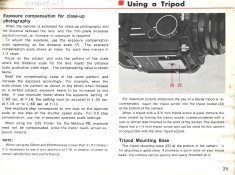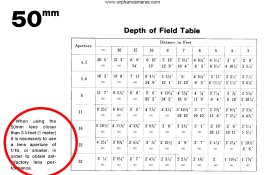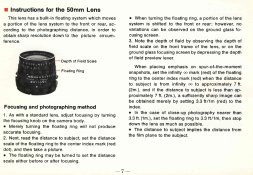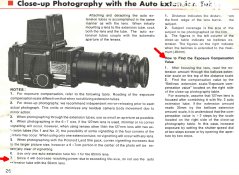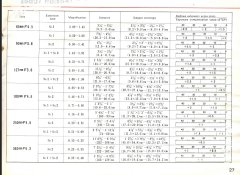Donald Qualls
Subscriber
My new-to-me 50mm f/4.5 came yesterday (lots of wear on the black finish, but the glass is very clean and shutter seems accurate). "Guaranteed delivery by Wed. 12/23" said the eBay listing, then "Arriving 12/21" on the tracking, then the UPS truck backed in on Saturday the 19th. Can't fault that!
I noticed when I mounted it to check function that I can focus really close -- the bellows draw that would let me focus to 2 meters or so with my 250 mm gets me down to around 10 cm with the 50mm. I look forward to using this that way, even though I mainly wanted it for wide panoramics with 35mm film.
The camera body (RB67 Pro S, if that makes a difference) has an exposure compensation (bellows factor) scale by the right focus knob, but reading it is a little cryptic. It seems to be marked in mm at the top of the scale, and then there are sloping, slightly curved lines for different focal lengths (seemingly covering the entire range offered by Mamiya, at least when this camera was made -- no 30 mm for the fisheye, but I think that was a later lens offering, from the Pro SD era). I've never paid attention to this before, because this is an SLR and I haven't done close focus images with it (yet).
The millimeter scale is easy to read, so I can manually calculate the corrected f stop -- 50mm plus 8 mm bellow draw would give 50/32 = 58/X, X = 32 x 1.16 = ~37, so effectively 1/3 stop extra time needed. The curves seem to be mainly about scale focusing -- but the compensation markings don't seem to want 1/2 stop extra time, even for 50mm, until I have 11 mm of draw -- 50/22 = 61/X, X = 22x1.22 = ~27 -- but if I focus near minimum distance (= largest image on the film, should be near 1:1 with 45mm of bellows) I'll have almost doubled the effective focal length -- and the compensation scale clearly only reads +1 stop, while it seems like it should be approximately +2 stops, as if I had a 2x tele-converter mounted (50/22 = 95/X, X = 22x1.9 = ~42).
Is the scale wrong, am I reading it the wrong way, or do I completely misunderstand bellows draw compensation? My previous experience with macro has been either with diopters (no compensation needed) or with cameras that meter through the lens, thereby automatically compensating for the extension rings.
I noticed when I mounted it to check function that I can focus really close -- the bellows draw that would let me focus to 2 meters or so with my 250 mm gets me down to around 10 cm with the 50mm. I look forward to using this that way, even though I mainly wanted it for wide panoramics with 35mm film.
The camera body (RB67 Pro S, if that makes a difference) has an exposure compensation (bellows factor) scale by the right focus knob, but reading it is a little cryptic. It seems to be marked in mm at the top of the scale, and then there are sloping, slightly curved lines for different focal lengths (seemingly covering the entire range offered by Mamiya, at least when this camera was made -- no 30 mm for the fisheye, but I think that was a later lens offering, from the Pro SD era). I've never paid attention to this before, because this is an SLR and I haven't done close focus images with it (yet).
The millimeter scale is easy to read, so I can manually calculate the corrected f stop -- 50mm plus 8 mm bellow draw would give 50/32 = 58/X, X = 32 x 1.16 = ~37, so effectively 1/3 stop extra time needed. The curves seem to be mainly about scale focusing -- but the compensation markings don't seem to want 1/2 stop extra time, even for 50mm, until I have 11 mm of draw -- 50/22 = 61/X, X = 22x1.22 = ~27 -- but if I focus near minimum distance (= largest image on the film, should be near 1:1 with 45mm of bellows) I'll have almost doubled the effective focal length -- and the compensation scale clearly only reads +1 stop, while it seems like it should be approximately +2 stops, as if I had a 2x tele-converter mounted (50/22 = 95/X, X = 22x1.9 = ~42).
Is the scale wrong, am I reading it the wrong way, or do I completely misunderstand bellows draw compensation? My previous experience with macro has been either with diopters (no compensation needed) or with cameras that meter through the lens, thereby automatically compensating for the extension rings.










